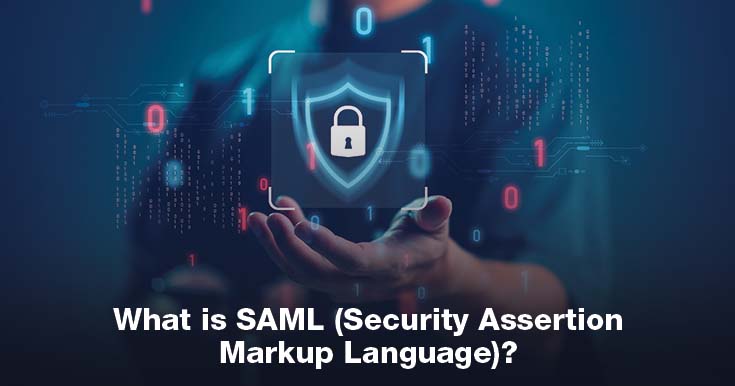A Comprehensive Guide to Incident Response: Understanding, Approaches, Templates and Beyond

What Is Incident Response?
Incident response is used to describe how an organization responds to a data breach or cyberattack, including how it tries to control the fallout from the assault or breach (the “incident”). The ultimate goal is to properly manage the incident so that the damage is restricted. Also, recovery time and expenditures are kept to be low, along with collateral damage like brand reputation.
Organizations ought to have an incident response plan in place, at the very least. This strategy ought to specify what the business considers to be an incident. Further, it lay out the precise steps that should be taken in the event of one. It’s also a good idea to identify the groups, or individuals in charge of overseeing the incident as a whole.
Why is Incident Response Important?
A security operations center (SOC) must be prepared for threads by having tested and recorded responses because attack tactics are becoming more frequent, sophisticated, and severe. The IR procedure assists in providing vital information regarding an attack. This includes how an attacker entered the system, what steps they followed, and whether sensitive data was compromised. An organization’s security function will be improved and potential legal responsibilities will be better understood with confident responses to these questions.
Furthermore, a successful IR strategy can lessen the negative economic effects frequently linked to cybercity events or breaches. If a business is not effectively prepared to respond, attack techniques like malware outbreaks, DDoS, and credential theft can be expensive and disruptive.
NIST vs SANS Incident Response Model
NIST and SANS created the two most reputable incident response frameworks. These provide IT teams with a structure on which to construct their IR strategies. The steps of each framework are listed below:
NIST Incident Response Steps
- Preparation
- Detection and Analysis
- Containment, Eradication and Recovery
- Post-Incident Activity
SANS Incident Response Steps
- Preparation
- Identification
- Containment
- Eradication
- Recovery
- Lessons Learned
The component of the NIST and SANS frameworks are nearly identical. However, the phrasing and organization of the components change slightly. According to NIST, the step where containment, eradication, and recovery overlap is crucial. It is suggested that organizations should not wait until all threats have been contained before starting the eradication process. This approach represents the greatest substantial deviation.
Which Framework is Better?
Some people argue over which framework is superior, but ultimately it depends on your preferences and the resources available. Both provide a thorough checklist that your team uses to get going. This article elaborates on the NIST Framework’s four phases and explains what each step means for your incident response strategy.
What are Security Incidents?

A security incident is an event that can be a sign of a network or system attack against a company. It may also indicate that one’s computer was not adequately protected from an attack by the security mechanisms in place. Unauthorized system access, which can interfere with regular operations, breach policies, and reveal sensitive data causes the majority of security incidents.
How Does Incident Response Work?
An organization can use the following steps as a part of the standard incident response :
Step 1: Early detection
In the event of a security breach, the system identifies the incident. Then, it promptly notifies the IR team through the security information and event management (SIEM) platform.
Step 2: Analysis
In order to prioritize the danger, analysts examine alerts, spot indicators of compromise (IOC), and use them. To gain a full picture of suspicious events, they frequently do additional testing, reviewing related alerts, and eliminating false positives.
Step 3: Prioritization
Analysts must understand how security incidents affect the organization’s operations and valuable assets. A team can better allocate resources in later phases by understanding which security events to prioritize by prioritizing incidents.
Step 4: Notification
The incident responder first alerts the necessary parties inside the organization. In this, Organizations often alert external parties. This includes clients, business partners, regulators, law enforcement officials, or the general public- in the event of a proven breach.
Step 5: Containment and Forensics
Incident responders act to put a halt to the incident and prevent the thread from spreading again. Additionally, they gather forensic evidence as required for additional inquiry or upcoming legal actions.
Step 6: Recovery
After successfully eradicating the malware from the impacted systems, incident responders rebuild, and restore from backups. They then patch those systems to bring them back online.
Step 7: Incident review
Security personnel examine the process that led to the discovery of the most recent occurrence. The goal is to stop similar incidents in the future. They pinpoint crucial elements from the effective incident response, and chances to upgrade systems. This includes tools, processes, staff training), and remedies for vulnerabilities found.
What is an Incident Response Plan (IRP)?
An incident response plan is a set of written instructions outlining the actions during each phase of incident response. Roles and responsibilities standards, methods for interaction, and set reaction times shall all be part of it.
It is crucial to identify any confusing terminology in your plan and to use precise wording. Event, alert, and incident are a group of words that are frequently used interchangeably. It may be helpful to use these terms in your plan as follows:
- Event—a modification to the status, communication, or system parameters. Examples include sending queries to the server, changing permissions, or deleting data.
- Alert—a notification brought on by a circumstance. Alerts can notify you of unexpected situations that require your attention.
- Incident—an event that puts a threat to your system, such as the installation of malware or theft of credentials.
Who Handles Incident Response?
A company’s cybersecurity team typically handles IR. Large companies have specialized security teams that deal with all facets of protecting the IT environment, including IR. Smaller businesses may use a managed third-party cybersecurity and incident response system or a designated individual.
What are some common types of Incidents?
There are several kinds of cybersecurity incidents that could lead to network invasions in a company:
- Unauthorized Attempts to Access Systems or Data: This occurs when someone or a group makes an attempt to obtain unauthorized access to the systems or data of an organization. Examples include social engineering techniques, brute force attacks, and hacker attempts.
- Privilege Escalation Attack: This occurs when an attacker manages to access a system with low-level privileges and then makes use of that access to obtain higher-level privileges. Taking advantage of system flaws or utilizing stolen credentials can accomplish this.
- Insider Threat: This occurs when a current or former employee, contractor, or other insider with authorized access to an organization’s systems or data is misused for malicious purposes, such as stealing sensitive information or destroying systems.
- Phishing Attack: This involves tricking individuals into sensitive information or infecting their devices with malware by sending deceptive messages that seem to come from a reputable source.
- Malware Attack: This occurs when an attacker deploys malicious software like viruses or Trojan horses to breach an organization’s systems or data, enabling them to conduct harmful activities. For instance, ransomware can block access to data until you pay the ransom.
- Denial-of-Service (DoS) Attack: This occurs when an attacker overloads a network or system with traffic, rendering it unavailable.
- Man-in-the-Middle (MitM) Attack: This occurs when an attacker intercepts and modifies two parties’ communications. The attacker can use this method to steal sensitive data or transmit malware.
- Advanced Persistent Threat (APT): A sophisticated and focused attack intended to penetrate a company’s system or data, frequently with the intention of stealing sensitive data or establishing a persistent presence.
Incident Response In The Cloud

The incident of incorporating the cloud into IR procedures grows as enterprise cloud usage spreads. With a few exceptions, the objectives of cloud incident response are as same as those of traditional IR.
Think of the shared responsibility paradigm, as an illustration. The IT and security teams of a business typically handle all management and security duties for on-duty premises applications, platforms, and infrastructure. On the other hand, CSPs take on small or all of the responsibilities for SAAS, PAAS, and IAAS. Depending on the deployment, this may take incident detection and investigation harder or perhaps impossible.
Along with new technologies and skill sets, a deeper understanding of cloud security incidents and threats may also be necessary for cloud IR.
Incident Management vs Incident Response
While Incident management is strategic and comprehensive, incident response is tactical and narrow.
One cannot succeed without the other since IR is really a subset of incident management. The overall incident management strategy influences technical IR procedures. Additionally, incident management is vital since incident response directly influences the likelihood that the company may lose sensitive data to theft or encryption.
As it affects how quickly and effectively an organization may recover from an attack or other security problem, IR has substantial immediate effects.
As it includes communication with important stakeholders, incident management has a tendency to have longer-lasting effects on the firm. Lacking an effective incident management strategy, incident management is much more likely to attract unfavourable attention from personnel, clients, the media, regulators, and the general public, harming the brand’s reputation in the long run. This makes having an incident response strategy with information on event management essential.
How Can DevTools Help You In Incident Response?
Devtools can be invaluable in incident response as they provide a set of powerful features and capabilities that make it easier to diagnose and comprehend different parts of web applications and systems.
By utilizing Devtools, Security experts can acquire profound insights into the behaviour of offline applications, spot possible risks, and ultimately improve the organization’s security posture by successfully utilizing Devtools during an incident response.
FAQs
An organization engages in an organized process to successfully handle and manage security response, it is known as IR Process. It often entails processes including preparation, detection, containment, eradication, recovery, and lessons learned, all of which are intended to limit harm and quickly and securely resume normal operations.
Lack of readiness, insufficient training, limited resources, slow detection, the complexity of IT infrastructures, poor team communication, out-of-date or inefficient IRPs, and the failure to draw lessons from prior occurrences are some of the typical causes of incident response issues.
The goal of incident response is to effectively and efficiently handle security incidents, minimizing their impact on an organization’s systems, data, and operations. The primary objective includes identifying and containing the incident, eradicating the threat, recovering normal operations, preserving evidence for the investigation, and learning from the incident to improve future IR capabilities.
An incident response team is responsible for promptly detecting, assessing, and responding to security incidents within an organization. They investigate and analyse incidents, contain and mitigate threats, recover systems, and work to prevent future occurrences.
An Incident response plan provides a structured approach, defines roles and responsibilities, enables faster detection and response, reduces downtime, preserves evidence for an investigation, and facilitates communication among teams, all contributing to an organized incident-handling process.
The IR cycle is a continuous process that includes planning, identifying, containing, eliminating, recovering, and learning from the experience. It attempts to effectively detect security incidents, respond to them, and recover from them while continuously enhancing incident response skills based on the lessons discovered from earlier occurrences.




